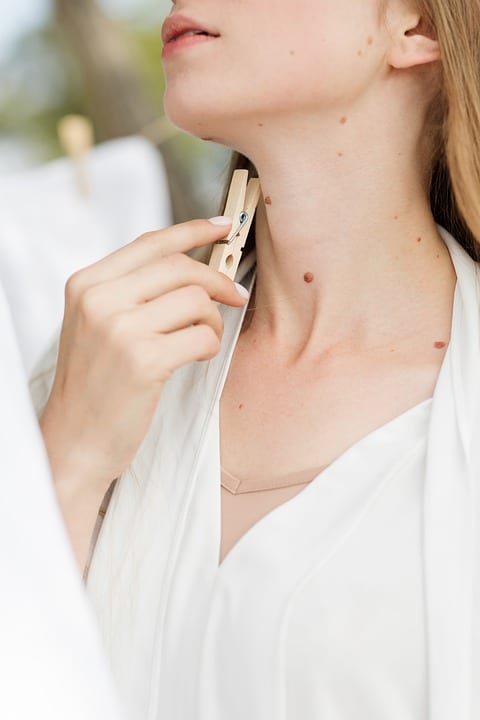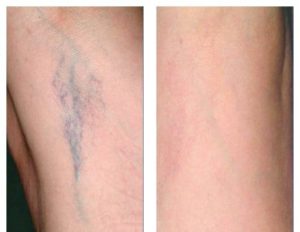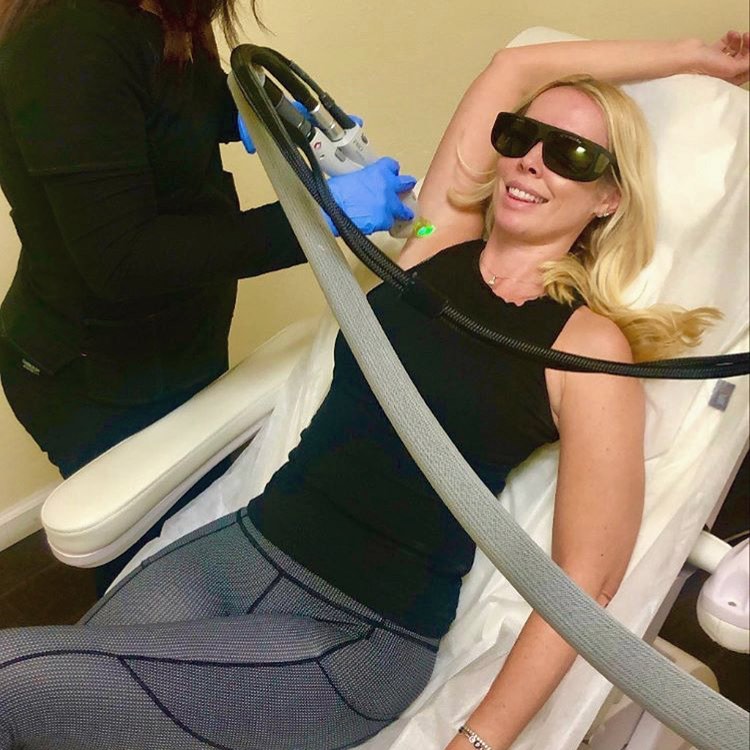Spoiled Laser specializes in providing safe and effective mole removal solutions in Las Vegas. Our team of highly trained professionals is dedicated to helping you achieve your desired results in a safe and comfortable environment. Whether you have a single mole or multiple moles that you would like to have removed, we offer a range of treatments tailored to suit your specific needs. With our advanced technology and expertise, you can trust that your mole removal procedure will be performed with the utmost care and precision. Say goodbye to unwanted moles and hello to a more confident you with Spoiled Laser’s mole removal services in Las Vegas.
Understanding Mole Removal
What are moles?
Moles are common skin growths that can appear anywhere on the body. They are usually dark in color and can vary in size and shape. Moles are typically harmless, but some individuals may choose to have them removed for cosmetic reasons or if they pose a potential health risk.
Why get a mole removed?
There are several reasons why individuals may opt to have a mole removed. One common reason is the desire to improve cosmetic appearance. Moles in visible or prominent areas of the body can cause self-consciousness and may affect one’s self-esteem. Additionally, if a mole shows signs of skin cancer or is suspected to be malignant, removal is usually recommended.
Factors to consider before mole removal
Before undergoing mole removal, it is essential to consider a few factors. First, the location and characteristics of the mole should be assessed. If the mole is in a highly visible area or poses potential health risks, removal may be a suitable option. It is also important to understand the available removal procedures, potential risks, and recovery process. Consulting with a qualified specialist can help provide more insight into these factors.
Get Your Free Consultation Today
Types of Mole Removal Procedures
Surgical Excision
In surgical excision, the mole is entirely removed using a scalpel or surgical knife. This procedure is typically used for larger or suspicious moles, as it allows for the entire mole to be sent for laboratory analysis. The area is usually numbed with a local anesthetic before the procedure, and stitches may be required to close the wound.
Shave Excision
Shave excision involves the use of a small blade to shave off the mole from the surface of the skin. This method is commonly used for smaller and non-cancerous moles that do not require further analysis. The area is numbed with a local anesthetic, and stitches are usually not required.
Laser Removal
Laser removal utilizes concentrated light energy to break down the pigment cells within the mole. This procedure is often suitable for smaller, non-cancerous moles and can be done without the need for anesthesia or stitches. Laser removal may require multiple sessions depending on the size and depth of the mole.
Cryotherapy
Cryotherapy involves freezing the mole with liquid nitrogen, causing the mole to gradually fall off over time. It is a common method used for small or superficial moles. Cryotherapy is relatively quick and generally well-tolerated, although multiple treatments may be necessary.
Electrocautery
Electrocautery is a procedure that involves burning the mole off the skin using an electric current. This method is typically used for small, non-cancerous moles. Local anesthesia is applied before the procedure, and the wound may require a bandage afterward.
Choosing a Mole Removal Specialist
Credentials and experience
When selecting a mole removal specialist, it is crucial to consider their credentials and experience. Look for specialists who are board-certified dermatologists or plastic surgeons with specific expertise in mole removal. It is also beneficial to inquire about their experience in performing the specific removal procedure you are considering.
Reviews and testimonials
Reading reviews and testimonials from previous patients can provide valuable insight into the quality of service and patient satisfaction. Look for specialists who have positive feedback and a track record of successful mole removal procedures.
Before and after photos
Reviewing before and after photos of the specialist’s previous patients can help you gauge their skill and the potential outcomes of the procedure. This allows you to assess whether their aesthetic approach aligns with your expectations.
Safety Measures for Mole Removal
Preparation before the procedure
Before mole removal, it is important to follow any pre-procedural instructions provided by the specialist. This may include avoiding certain medications or substances that could increase bleeding or interfere with anesthesia. Proper preparation ensures a safe and successful procedure.
Use of anesthesia
Most mole removal procedures require the use of anesthesia to ensure patient comfort during the procedure. The specialist may administer a local anesthetic to numb the area or, in some cases, recommend general anesthesia for larger or more complex procedures. Anesthesia selection will depend on the location and size of the mole, as well as the patient’s medical history.
Proper wound care
After mole removal, proper wound care is crucial for minimizing the risk of infection and promoting optimal healing. The specialist will provide detailed instructions on how to clean and dress the wound, as well as any medications or ointments to apply.
Potential risks and complications
While mole removal is generally safe, like any medical procedure, there are potential risks and complications to be aware of. These may include bleeding, infection, scarring, and changes in skin pigmentation. It is essential to discuss these risks with the specialist before undergoing the procedure.
Preparing for Mole Removal
Consultation with a specialist
Before undergoing mole removal, it is recommended to schedule a consultation with a specialist. During this consultation, the specialist will assess the mole, discuss your goals and expectations, and provide information about the most appropriate removal procedure for your specific case. It is an opportunity to address any concerns or questions you may have.
Understanding the procedure
It is important to have a clear understanding of the chosen mole removal procedure. The specialist will explain the steps involved, potential outcomes, and any post-procedure care requirements. Understanding the procedure helps manage expectations and ensures you are prepared for the process.
Discussing expectations and concerns
During the consultation, it is important to discuss your expectations and any concerns you may have regarding the mole removal. This allows the specialist to tailor the treatment plan to your specific needs and address any uncertainties or anxieties you may have.
The Mole Removal Process
Preparation of the area
Before the mole removal procedure begins, the specialist will clean and sterilize the skin surrounding the mole to prevent infection. They may also mark the boundaries of the mole to guide the removal process.
Administration of anesthesia
Once the area is prepared, the specialist will administer the chosen anesthesia to ensure your comfort throughout the procedure. Local anesthesia can be injected into the skin surrounding the mole, numbing the area.
Procedure execution
Following anesthesia, the chosen mole removal procedure will be executed. The specialist will carefully remove the mole using the selected technique, taking care to achieve the desired aesthetic outcome or address any potential health concerns.
Wound closure
After the mole is removed, the specialist will determine if wound closure is necessary. Stitches may be used to close the wound for surgical excision, while shave excision and some other methods may not require sutures. The specialist will provide post-procedure instructions for wound care and provide any necessary dressings or bandages.
Recovery and Aftercare
Postoperative care instructions
Following mole removal, the specialist will provide specific postoperative care instructions to ensure optimal healing and minimize the risk of complications. These instructions may include how to clean the wound, when and how to change dressings, and what signs of infection or complications to watch for.
Managing pain and discomfort
It is common to experience some mild pain or discomfort after mole removal. The specialist may recommend over-the-counter pain relievers or prescribe medication to manage any discomfort during the recovery period. It is important to follow the specialist’s guidance and not hesitate to contact them if pain becomes severe or persists.
Monitoring the healing process
During the recovery period, it is essential to closely monitor the healing process. Keep the area clean and dry, and follow any wound care instructions provided by the specialist. If any signs of infection, excessive bleeding, or delayed healing occur, contact the specialist promptly for further evaluation and guidance.
Results and Follow-up
Expected outcomes
The expected outcomes of mole removal vary depending on factors such as the size and location of the mole, the removal technique used, and individual healing characteristics. In general, after the healing period, the treated area should appear smoother and more even in tone, with the mole no longer present.
Follow-up appointments
Follow-up appointments with the specialist are typically scheduled to monitor the healing process and assess the results of the mole removal. During these appointments, the specialist can address any concerns or questions you may have and provide further guidance for long-term care and maintenance.
Monitoring for potential complications
While complications are rare, it is important to monitor the treated area for any signs of infection, abnormal scarring, or changes in skin pigmentation. If any concerns arise, contact the specialist promptly for further evaluation and appropriate management.
Cost of Mole Removal
Factors influencing cost
The cost of mole removal can vary depending on various factors. These factors may include the expertise and experience of the specialist, the complexity of the mole removal procedure, the location of the mole, and any additional treatments or medications required. It is recommended to consult with the specialist to obtain an accurate cost estimate.
Insurance coverage
Insurance coverage for mole removal varies and depends on the specific circumstances. In some cases, if the mole is suspected to be cancerous or poses a significant health risk, insurance may cover the removal procedure. However, if the mole removal is solely for cosmetic purposes, insurance coverage may not be available. Review your insurance policy or consult with your insurance provider to determine coverage options.
Payment options and financing
Specialists typically offer various payment options and financing plans to accommodate different budgets. These may include payment plans, credit card payments, or financing through specialized healthcare financing companies. It is advisable to discuss payment options with the specialist’s office to find a suitable arrangement.
Alternative Methods for Mole Removal
Home remedies and over-the-counter solutions
There are various home remedies and over-the-counter solutions available for mole removal. However, it is crucial to approach these methods with caution. Home remedies, such as apple cider vinegar or garlic paste, may not have scientific backing or proven effectiveness. They can also cause skin irritation or potential harm if not used correctly. It is always best to consult with a qualified specialist for safe and effective mole removal.
Dangers and limitations of DIY removal
Attempting to remove a mole at home without professional guidance can have significant risks and limitations. DIY removal methods can lead to infection, scarring, or inadequate removal, which may result in the mole’s regrowth or even worsen its appearance. Additionally, self-diagnosis of moles is not reliable, and attempting to remove a mole without proper analysis can prevent early detection of potentially serious health conditions. It is always advisable to seek professional medical advice for mole removal.



